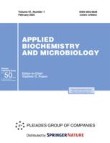Abstract
Purpose
Bioelectrical impedance analysis (BIA) has been used recently to measure the body water of patients with acute heart failure. We used BIA in this study to better understand, and possibly identify a predictive marker for, perioperative water behavior in cardiac surgery patients.
Methods
We measured body water and studied its behavior in 44 patients undergoing surgery for cardiac valvular disease at our hospital. Measurements included the levels of extracellular water (ECW), intracellular water (ICW), and total body water, the edema index (EI), and the ratio of ECW to total body water. The first measured EI was defined as the "preoperative EI" and the maximum as the "peak EI".
Results
A negative correlation was found between the preoperative EI and the preoperative estimated glomerular filtration rate (eGFR) (R = 0.644, p < 0.001). Positive correlations were found between the peak EI and the ICU stay (R = 0.625, p < 0.001), the peak EI and the ventilation time (R = 0.366, p < 0.01), and the preoperative EI and the ICU stay (R = 0.464, p = 0.026).
Conclusion
The EI is possibly a predictive marker for perioperative water management in cardiac surgery.



